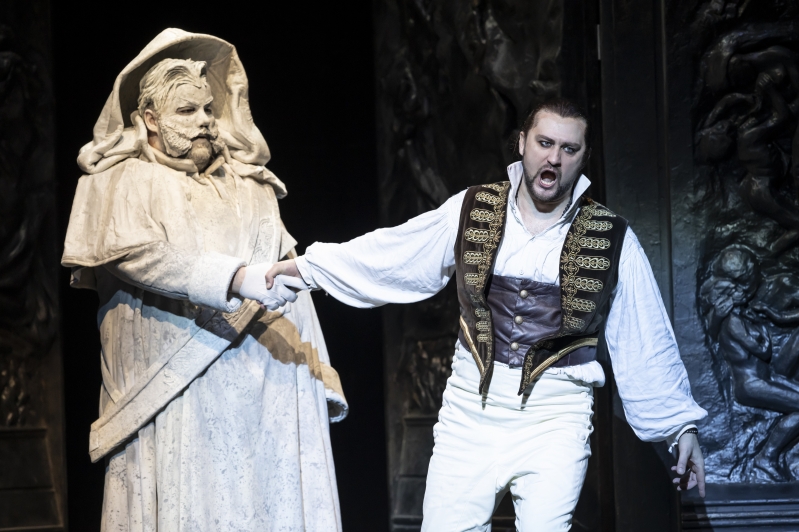As the nights draw in and pumpkins glow in the darkness, the world of opera takes a darker turn. Beneath those velvet curtains and proscenium arches lurk spirits, murderers, and maniacs whose stories are far more chilling than any ghost tale. Take a deep dive with us and explore opera’s most horrifying and haunting characters.
The Queen of the Night – The Magic Flute (Mozart)
Every Halloween needs a witch, and where better to begin than with Mozart’s dazzling yet deadly Queen of the Night. Once a guardian of light, she has been cast aside and stripped of her power, leaving a mother consumed by grief and fury. In revenge, she places a dagger in her daughter Pamina’s hand and commands her to kill the high priest Sarastro.
Her famous aria Der Hölle Rache (Hell’s Revenge) burns with her desire for blood. As she imagines Sarastro turning pale, the music transforms fury into elegance, crossing from the merely spooky into the truly terrifying.
The Flying Dutchman - (Wagner)
Cursed to sail the seas forever, Wagner’s ghostly mariner is one of opera’s great supernatural icons. Inspired by the legend of a ship doomed to roam the oceans, The Flying Dutchman turns folklore into tragedy. The Dutchman embodies two of humanity’s oldest fears: eternal unrest and utter loneliness. His story is as much about redemption as it is about damnation, a haunting reminder that even the supernatural can long for love.
The Witch – Hansel and Gretel (Humperdinck)
This fairy-tale opera may open with dancing children, but its true horror lies within the gingerbread cottage. The Witch’s sugary spells conceal something far more sinister: a predator who fattens up children before baking them alive. Humperdinck’s lush Romantic score makes the story even more unsettling. In her disturbingly gleeful Ja, Gretelchen Hurr hopp hopp hopp!, the Witch skips around the stage with childlike delight as she plots her next meal.
The Commendatore – Don Giovanni (Mozart)
Don Giovanni is opera’s ultimate sinner: charming, reckless, and unrepentant. When he kills the noble Commendatore, he believes he can escape the consequences. But the murdered man returns as a statue and accepts Giovanni’s invitation to dinner. In the final scene, the Commendatore’s marble hand drags Giovanni to the depths of hell in one of opera’s most famous supernatural reckonings.

Médée – Médée (Cherubini)
Few characters in opera are as chilling as Médée. Part sorceress and part scorned lover, she is terrifying precisely because her heartbreak feels real. When Jason abandons her for another woman, something deep within her breaks. Pain turns to fury, and that fury consumes everything she once loved. She poisons his new bride, sets the palace ablaze, and in one of opera’s most harrowing moments, kills her own children.
Inspired?
Experience the supernatural live on stage when Welsh National Opera returns next spring with Wagner’s The Flying Dutchman, a storm-tossed tale of love, legend and myth. Catch the premiere in Cardiff in April 2026 before it sets sail for Plymouth, Birmingham and Milton Keynes.




